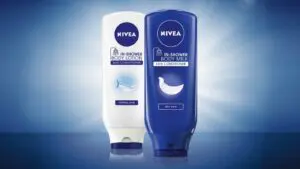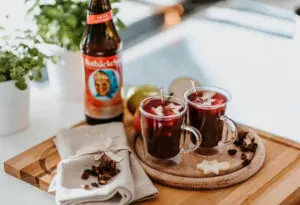The conditions for innovation are good - especially with the Covid 19 crisis coming to an end. Psychologically, humans are fundamentally innovative: we are driven by unconscious fields of tension and are always on the lookout for new products, brands and experiences.
The market often fails to satisfy this 'hunger' for novelty. Innovations have had constant flop rates of between 70-80% (consumer goods industry) for years. The main reasons for failure are:
- Lack of bird's eye view: Innovations are created in collaborative processes between clients, agencies, market research. To do this, you have to take time out of your day-to-day business and work together as an 'Inno-Team', which is not happening enough.
- Lack of alignment with customer needs: many 'brilliant' ideas fail because of a lack of review of customer needs. These really need to be understood in depth
- Lack of systematics in the innovation process: Successful innovations require systematic development. This includes a structured research process (see below), in the course of which prototypes are developed, tested and brought to market maturity.
How do successful innovations succeed?
5 brand awards in recent years - rheingold systematically accompanies its clients in innovation developments and is often successful in doing so. Essential for success is the structured research process, which is precisely tailored to each client and its brand.
In this process, three levels are taken into account, which are decisive for the success of innovations:
- Trend level: picking up on current cultural trends
- Psychology of the product area
- Brand fit
1. trend level
When searching for innovations, one should always keep one's ear to the pulse of contemporary culture. What is relevant here are not short-term trend 'flashes in the pan', but larger, cultural currents that have a certain substance and longevity.
However, pure trend following does not automatically lead to success. Picking up on trends makes sense especially when they correspond with the client's market and brand.

Rheingold has accompanied the Frosch brand in strategy, product development and innovation processes for 25 years. Frosch very successfully picks up on the sustainability trend, which is particularly relevant for the household cleaner market. With Frosch, you don't have to carry out any general staff-style floor offensives (that's what 'The General' stands for), but you clean in a more relaxed way and with a clear conscience. Because you not only clean your home, but you also clean for the environment. This feel-good moment with the brand - based on sustainability - was used to develop a genuine product innovation with which Frosch was able to penetrate a new product segment: air fresheners were launched on the market under the Frosch Oase brand, which provide a pleasantly scented feel-good ambience at home and won the brand award in 2008. The brand's comprehensive sustainability orientation then led to it winning the award for the best sustainability strategy in 2020. Frosch reconciles man and nature and conveys sustainability not with a raised forefinger, but with enjoyment and a human face.
Start-ups in the craft beer sector also have their finger on the pulse. They are picking up on the trend toward authenticity and recollection. Consumers (especially younger ones) are showing a certain weariness with the big brands and are looking for something special and original. The small craft beer startups, with their personal founding stories, generate closeness and trust - values that seem to be increasingly lost on a global scale.
However, not every successful product innovation has to pick up on existing trends. Innovations can also be developed purely from the psychology of the product area and the brand.
2. psychology of the product area
In order to come up with ideas for innovations or to review existing innovation ideas, the product area must be understood in its psychological depth. rheingold has specialized in this for over 30 years: uncovering the inherently contradictory, largely unconscious desires and motives of consumers.

With its In-Shower Body Lotion, Nivea has developed a product innovation based on a deep understanding of what happens in the bathroom in the morning. In two-hour rheingold interviews, test subjects described to us the complete sequence of their morning routine: While the process of showering was perceived as comforting, warm, secure, and a pleasant continuation of the dreamy nighttime state, the application of body lotion was associated with a chilly arrival in reality. Body Lotion stands for the first everyday try-on - soberly, the problem areas were targeted and the application of lotion completed as a compulsory exercise. This is where the idea of combining the everyday test with the pleasant was born. One test person said, "Wouldn't it be nice if applying body lotion were as pleasant as taking a shower?" The result was then a nourishing body lotion that could be applied while showering and thus not catapult out of the dreamy, pleasant state of mind. The prerequisite is that R&D has technologies in its pipeline to be able to implement such innovations.
The Nivea example shows that the motives for product use are mostly unconscious - and inherently contradictory and tense. Innovations are the answer to the ever new desire to reconcile the immanent contradictions in the product area:
- With the In-Shower Lotion, Nivea succeeded in bringing together the cool and uncomfortably realistic application of body lotion with the pleasantly warming condition of showering.
- In the area of salty snack products, it's all about the tension between spicy-fatty indulgence and the desire for non-industrialized, primal, healthier nutrition - Lorenz's Naturals chip brand is one answer.
- When it comes to chocolate, consumers get caught in the conflict between wanting to melt childishly sweet and maintaining the adult form. Ritter Sport 's crunchy, sporty brand image helps prevent sinking, while Milka 's purple outer packaging brings an awakening alienation effect to the melt-in-the-mouth world of chocolate. High cocoa percentages bring in an adult moment on the product level.
In 2020, rheingold investigated the German sausage and ham market for family butchers. The market is determined by an increasing price decline, the consumer perception by a constant availability and over-supply of meat and sausage. 'Noisy' movements like veganism and vegetarianism worry the industry.
The study has shown that the consumption of meat and sausage is characterized on the one hand by the essential need for the supply of vitality (symbolically through the appropriation of the animal's animal powers). This has always been connected with feelings of guilt (killing the animal), which have reached a critical level only through the massification and cheapening of meat. The whole culpable cycle has come into view: animal welfare, deforestation for the cultivation of animal feed, CO2 problems etc.
One way out of this dilemma is to counteract massification. Rheingold has developed six different fields of innovation for the meat and sausage market, all of which enhance the market while appealing to different 'meat types' in each case: 'predators', 'sausage romantics' and 'innocent lambs' are three of these sausage types, each of which can be addressed at the POS through its own staging. These innovative staging fields enhance the sausage and ham market, counteract the loveless massification and generate a new appreciation for the industry that is under fire.
3. brand fit
Finally, it is important that an innovation fits the brand as well as possible or does not run counter to the brand values.
rheingold carried out a customized innovation process for the fruit juice brand Rotbäckchen. The traditional brand had stagnating sales in spite of high awareness and sympathy values. In the depth psychological analysis, the reasons for this and the starting points for innovations could be worked out: Rotbäckchen stagnated because, on the one hand, the brand radiated a grandmotherly, authoritarian claim to be a panacea: users felt patronized by the brand's 'dictate' of salvation. Added to this was an enormous sensual seductive power: the blood-red juice, the red-hot cheeks of the girl, the creamy consistency radiated such a salvific potency that consumers wanted to keep the brand at bay; mothers, for example, no longer offered their prepubescent daughters this blood-forming juice - out of unconscious menstrual defense. The barrier to access and, at the same time, the starting point for innovations was thus the basic psychological conflict of a 'panacea': the brand's comprehensive claim to paternalism and its overly strong sensual seductive power - which triggered a strong urge to disenchant and self-determine the brand.

The seductive power could be relativized by generalizing the brand: by introducing spritzers or a children's punch drink, the magical spell of the brand was softened or diluted. The paternalistic claim of a panacea was relativized by differentiating the brand in a contemporary functional way: various new products for body, soul and spirit were developed, giving consumers the feeling of freedom of choice again. The result of the innovation process was a sales growth of 2000% and winning the German Brand Award 2020 for innovative and creative brand management.
Conclusion
When thinking about innovations, customers are always faced with the questions: where to start, what do we already have in the quiver, how can we identify conditions for a successful innovation, how can we set up a targeted Inno process and achieve success?
The increasingly dynamic and competitive markets force high innovation pressure. In some cases, 'trial and error' is used, in others, standardized innovation processes in market research are resorted to in the hope of obtaining a guarantee from the market.
In our view, standardized processes fall short. You cannot look at the individual circumstances of a market, a brand, and the consumer soul in a market according to a schema.
rheingold develops a customized, collaborative process based on client briefings that brings together psychological consumer realities, the brand and practical feasibilities. Developed prototypes are repeatedly incorporated into the process and tested 'on the market' for success. Truly successful innovations put 'through their paces' are the result of this effort.
Frank Quiring, a graduate psychologist, is a member of the management team at the Cologne-based market research institute rheingold. Frank Quiring's work focuses on packaging, food/beverages, and cultural psychology. Quiring is one of the authors of the rheingold youth studies, which regularly take a close look at the sensitivities, issues and trends of young people.
Tel.: +49 221-912 777-69
E-mail: quiring@rheingold-online.de





